A dream safari in one of Africa's most beautiful national parks

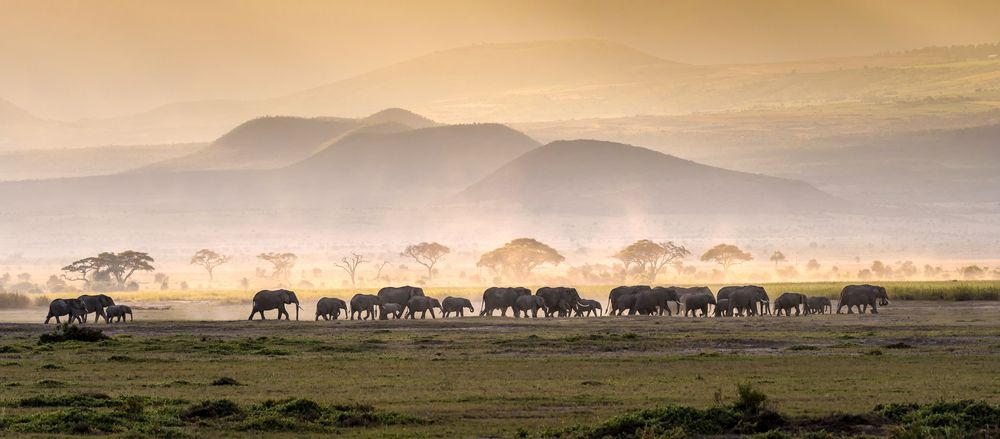
A dream safari in one of Africa's most beautiful national parks
The Serengeti is one of Africa's safari hotspots. The park, which was Tanzania's first national park, is proving to be one of the most beautiful on the continent. Its extremely rich ecosystem is home to an incredible biodiversity that is the source of the greatest prey-predator diversity in the world. Tanzania remains a safari paradise in the eyes of all. Emblematic wildlife reigns supreme on the high plateaux of the savannah. Set off to discover this flamboyant country, with its magical and memorable encounters in store for you.

Serengeti safari
- © Suntichai Boottasen / ShutterstockIn the lands of the Masai people, discover their centuries-old customs and pastoral way of life. The park opens its doors to adventurers for a day in magnificent lodges in the heart of the savannah. The epitome of luxury, you'll have breakfast overlooking the endless plains, and why not accompanied by a herd of elephants in the distance. But the real robinsons won't be outdone: you can also go on a more authentic safari and opt for camping in the heart of the African bush at a lower cost.
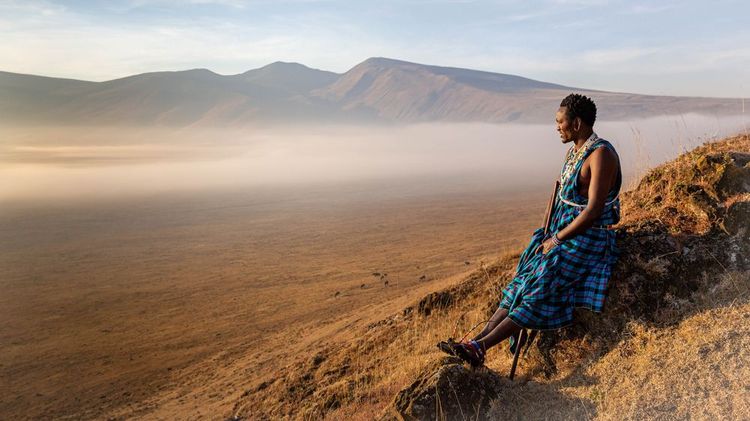
Masai warrior
- © SelimBT / ShutterstockMeet the Big Five on the endless plains that are home to millions of animals. Before the park was fully protected, the animals shared their land with the Masai warriors. Before the park was fully classified as a national park and protected, the Masai warriors, a people from East Africa, shared these vast areas with them. The name "big five" defines the five most difficult and dangerous animals for the Masai to hunt. They are lions, elephants, rhinos, buffalo and leopards. Unfortunately, some of these animals are now endangered or threatened with extinction. But when you go on safari in the Serengeti, you are helping to save the park by paying your entrance fees, among other things.
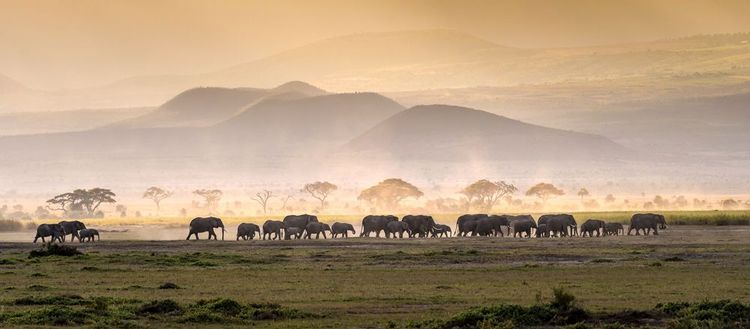
Elephant herd in Tanzania
- © Andrey Bocharov / ShutterstockA successful safari is first and foremost a question of timing. The Serengeti is home to the natural phenomenon of the great migrations. It is one of the last places on earth where you will be able to witness this grandiose spectacle. The great plains of the Serengeti are home to Africa's great herbivores, who march north for weeks on end in search of new grazing grounds and fresh water. You'll have the chance to witness some spectacular wildlife scenes. More than 2 million wildebeest, hundreds of thousands of zebra and Thomson's gazelle travel thousands of kilometres through a maze of dust towards Kenya. All are followed closely by hungry predators. Lions, leopards, cheetahs and hyenas track the herds, looking out for a stray calf.
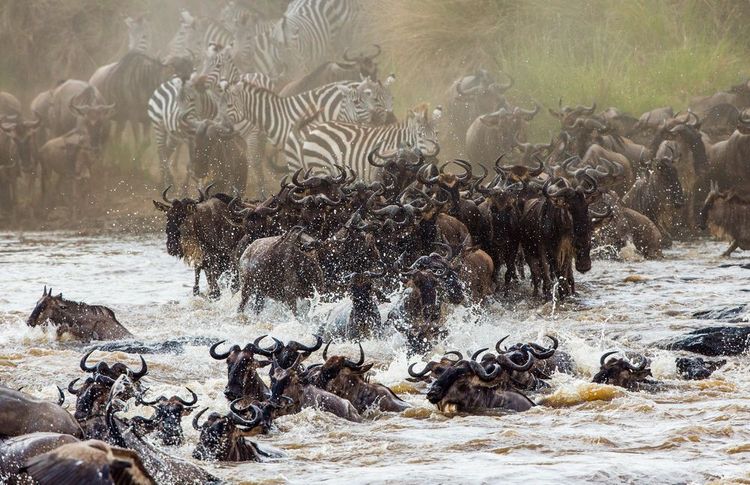
Crossing the Masai Mara River during the great migrations
- © GUDKOV ANDREY / ShutterstockIn terms of planning, June and especially July are the best months of the year to witness the transhumance in the Serengeti. From December to March, herbivores and the predators that follow them are present in the park, but in small herds. The animals are most numerous in the Ngorongoro Conservation Reserve and in the eastern part of the Serengeti. April and May are usually very rainy months, making the tracks impassable. In June, the huge herds of wildebeest, zebra and gazelle begin their gathering and transhumance northwards. They cross the Serengeti until July before reaching the Masai Mara and Kenya in August. This is the time of the famous Mara Masai river crossing. The large herds usually return to the north of the Serengeti in October, heading for the south of the park in November.
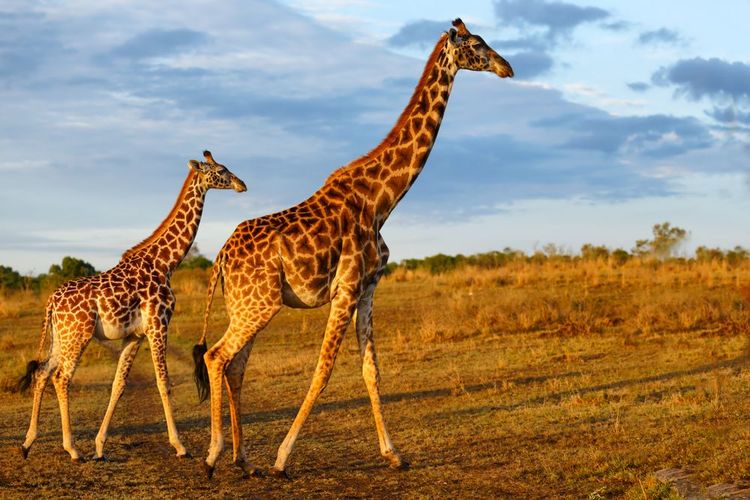
Giraffe in the Serengeti
- © Maggy Meyer / ShutterstockCovering an area of almost 15,000 km2, the Serengeti stretches from the north of Tanzania to the Kenyan border, and shares the same ecosystem as the Masaï Mara Park. With its exceptional beauty and extremely dense animal diversity, you're sure to see many species on your safari. But if you want to make the experience even more unforgettable, why not opt for a hot-air balloon ride? It's 5 o'clock in the morning, and you're off to discover the hot-air balloon that will accompany you on this magical excursion. The sun rises and you climb into the air with it. The sky envelops the savannah in an ochre colour and you fly over the great plains that stretch as far as the eye can see. Below, you see majestic giraffes feasting on acacia leaves.
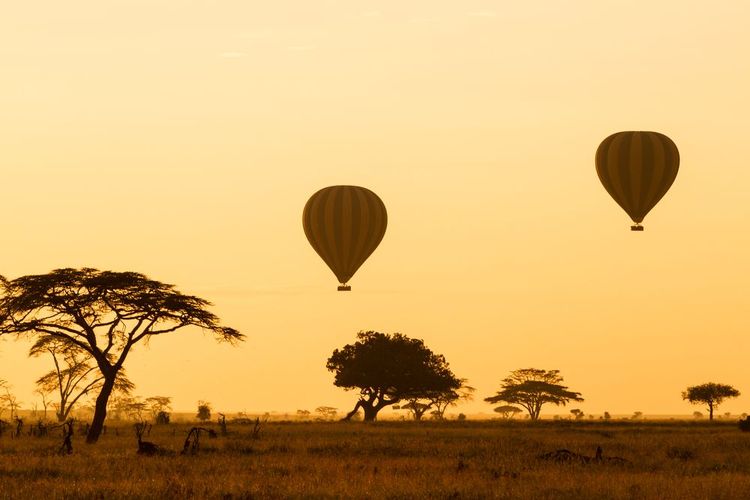
Sunrise in a hot-air balloon
- © Jez Bennett / ShutterstockAs you will have realised, a safari in the Serengeti is a guarantee of being amazed by spectacular, unspoilt nature. It's a chance to encounter magnificent flora and fauna. Whether you're a couple, a family or even on your own, it's a trip that promises to be spectacular and unforgettable.

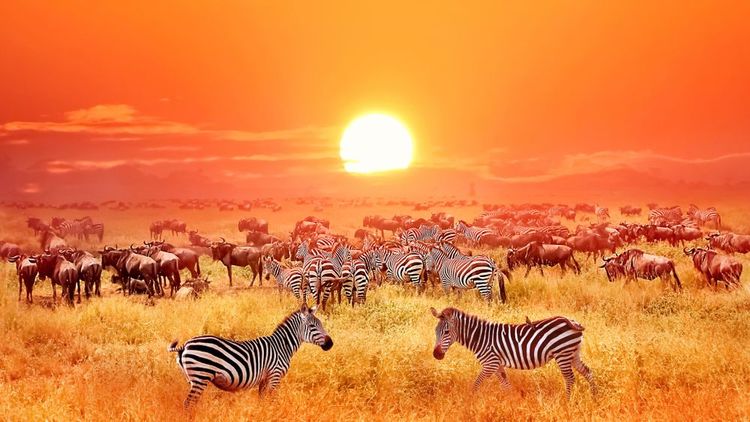 1
1
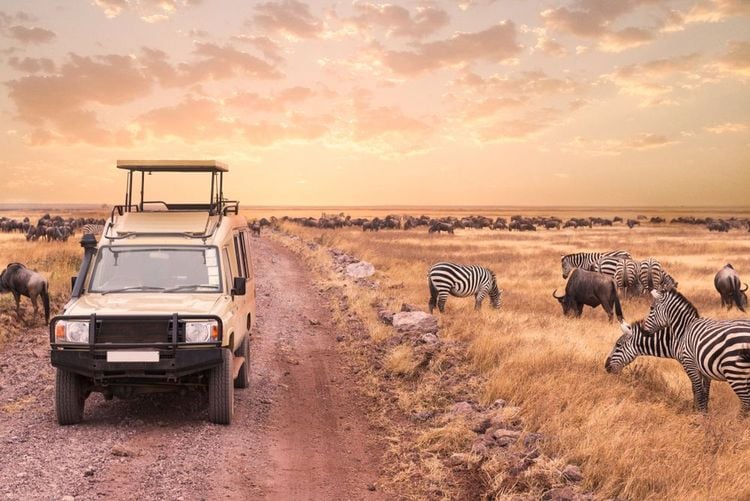 2
2
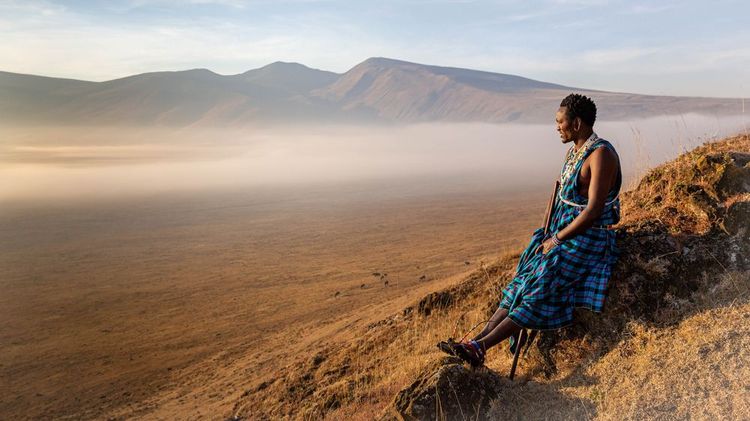 3
3
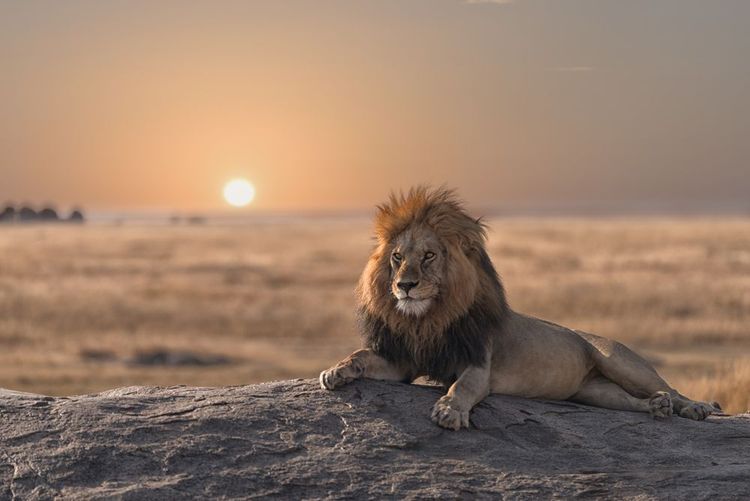 4
4
The Serengeti lies in the north of the country, and shares a border with Kenya and the Masaï Mara Park, which is its natural extension. The nearest airport to the park is Arusha. From Paris, expect at least two stopovers, one in Addis Ababa and one in Stone Town (Zanzibar). This is why most travellers extend their stay in the idyllic setting of Zanzibar.
The Serengeti offers a range of accommodation options. You can opt for the quintessence of luxury and treat yourself to a comfortable, sumptuous stay in an all-inclusive lodge. There are also nomadic camps with canvas tents, which are more reasonably priced but just as comfortable: bed, private bathroom, meals, etc. For the more adventurous, you can pitch your own tent in one of the park's nine campsites for $36 a night (shared sanitary facilities, shared kitchen block, etc.).

National parks :
National parks, conservation areas and reserves are fee-paying and highly regulated. It is highly advisable to hire the services of a driver-ranger to take advantage of them. Expect to pay around $60 for entry to Serengeti Park if this is not included in the price of your stay.
There's a good reason why the East African plateaux are called "the highlands of Africa". A safari generally takes place at an altitude of between 1,500 and 2,500 metres. And it's cool, even very cool, at dawn, the best time to explore the savannah. Bring jumpers, socks and fleeces! Especially if you're planning to camp in a campsite or take a hot-air balloon safari.
Great Migration :
To witness the Great Migration, June and July are the best months of the year in the Serengeti. These are natural phenomena and therefore impossible to date precisely. From December to March the animals are present in the park in very large numbers but are scattered. The Ngorongoro Conservation Reserve and the eastern Serengeti are the best places to see them. The huge herds gather and begin their march north in June. They cross the Serengeti until July before reaching the Masai Mara in Kenya in August. The large herds usually appear in the north of the Serengeti in October and head south of the park in November.
When to come to Tanzania
The only periods to really avoid on a trip to Tanzania are April and May for safaris (very rainy, the tracks become impassable). If you plan to combine your safari with a stay on the island of Zanzibar, you should also avoid March, April and May, which are very rainy. In the archipelago and Tanzania in general, the months from June to October are the best for travelling.
Social behaviour
As in many African countries, people in Tanzania greet each other long and warmly by holding hands. Tanzanians can sometimes seem rather reserved towards tourists. As in the rest of East Africa, you should be a little careful with your wardrobe. Avoid dressing too lightly
The Masai:
The semi-nomadic culture of the Maasai is fascinating. Although their songs, jumps and dances are rarely practised any more than for tourists and have fallen into the realms of folklore, their age-old tradition of living in harmony with their natural environment is well worth taking an in-depth look at.
Safaris :
A safari cannot be improvised and strict instructions must be followed for the good and safety of both humans and wildlife. In particular, not getting out of your vehicle is a basic rule! It is also not advisable to go into the park alone if you are inexperienced and unfamiliar with the area. Indeed, African parks can be visited alone. However, the Serengeti has very few signposts to show you the way. For your own safety, it is therefore preferable to opt for a private driver or to leave via an agency that will organise your stay.
Visas :
A visa is compulsory for a stay in Tanzania, and is issued electronically via their government website. However, it is also possible to obtain one on arrival in Tanzania. https://eservices.immigration.go.tz/visa/&utm_source=easyvoyage
Vaccinations:
Make sure your vaccinations are up to date before you leave. The information on yellow fever vaccination is somewhat ambiguous. It is compulsory for people coming from a country where yellow fever is endemic or who have spent more than 12 hours in transit in one of these countries. However, proof of vaccination is regularly requested at random.
Currency:
The currency in Tanzania is the Tanzanian shilling. However, the dollar is widely used. Remember to take cash with you. ATMs are still rare. 1 EUR = 2400 TZS
Tanzania is a magnificent and authentic country. There are many natural wonders to discover, and the history and culture of the Masai is absolutely fascinating. If you have the budget, we recommend combining your safari with a stay on the Zanzibar archipelago.
explore Try out our comparators
It is Easy to travel



